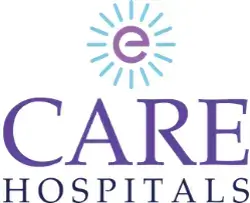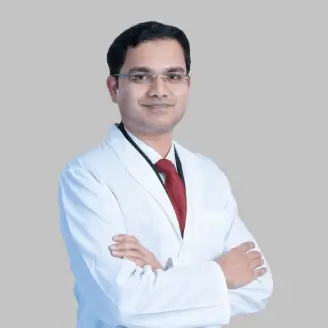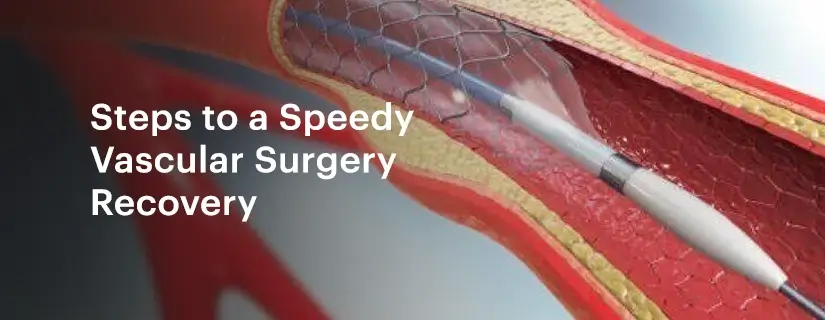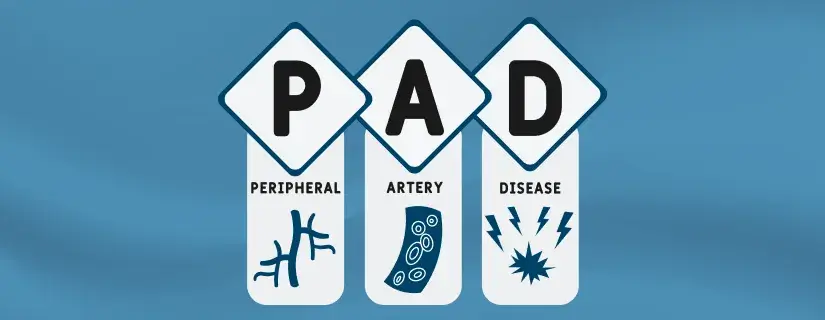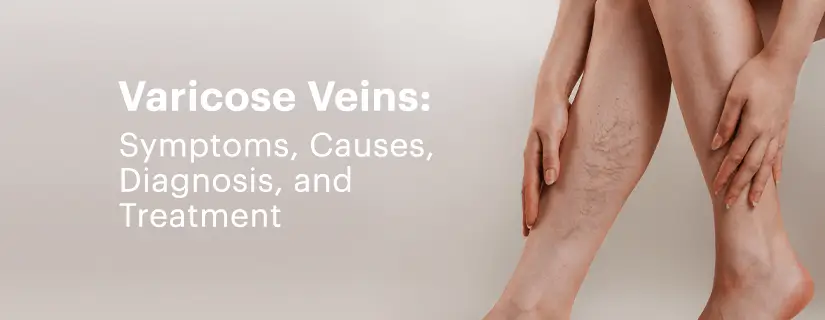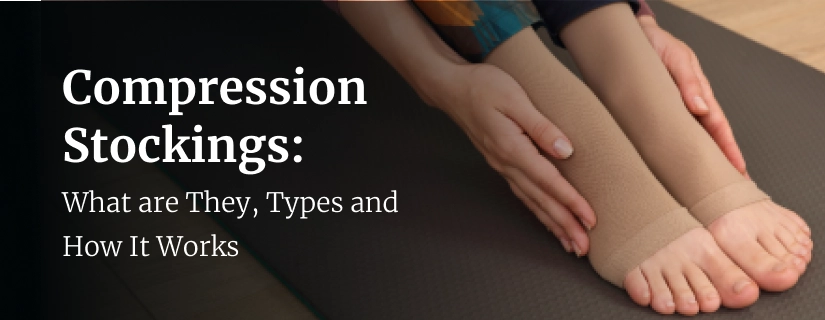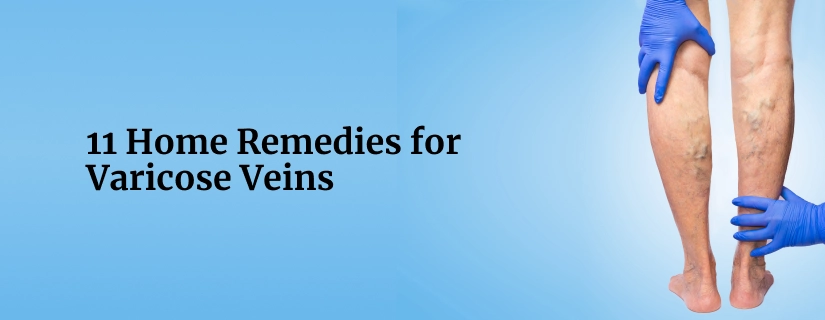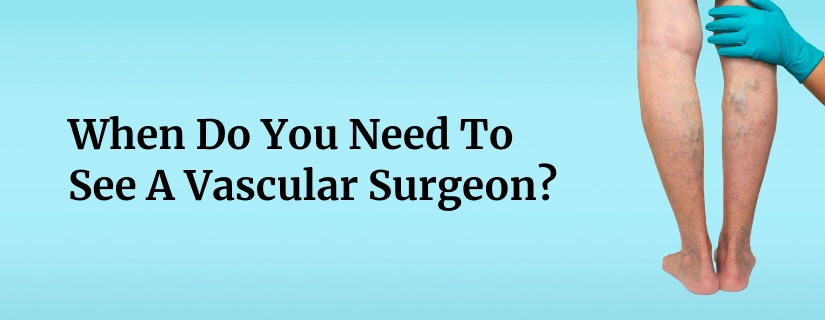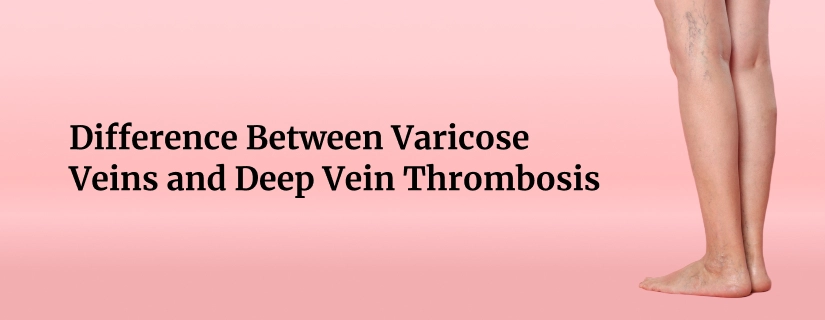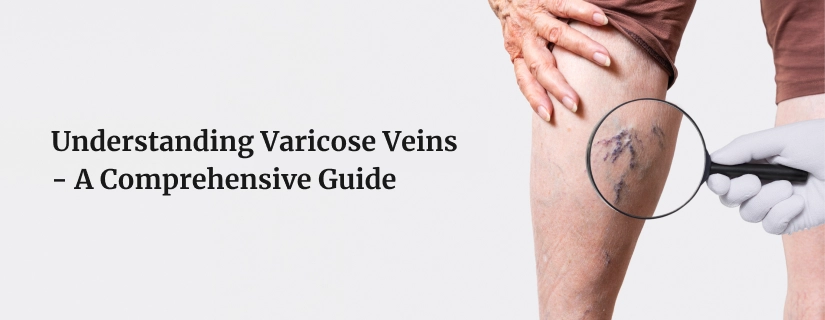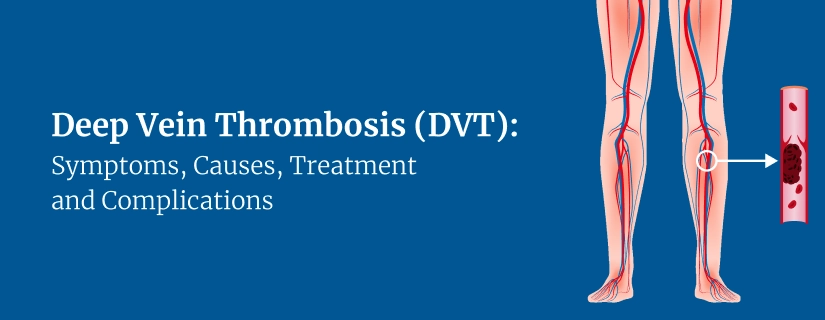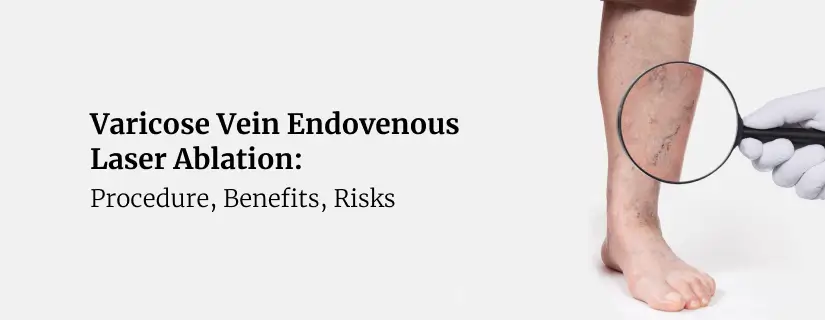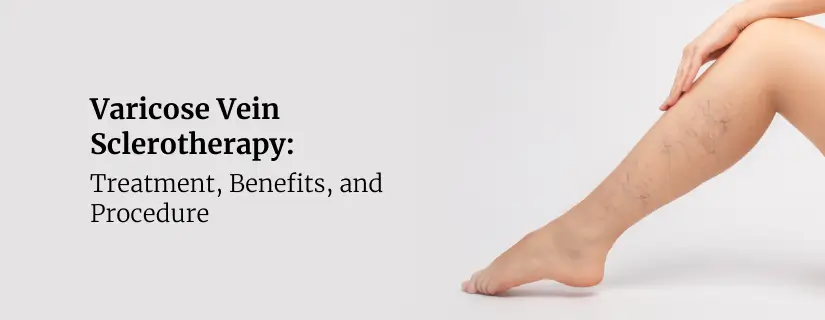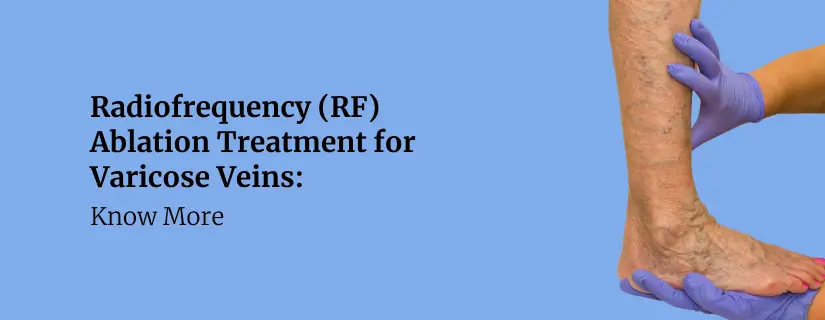-
Doctors
-
Specialities & Treatments
Centre of Excellence
Specialties
Treatments and Procedures
Hospitals & Directions HyderabadCARE Hospitals, Banjara Hills CARE Outpatient Centre, Banjara Hills CARE Hospitals, HITEC City CARE Hospitals, Nampally Gurunanak CARE Hospitals, Musheerabad CARE Hospitals Outpatient Centre, HITEC City CARE Hospitals, Malakpet
HyderabadCARE Hospitals, Banjara Hills CARE Outpatient Centre, Banjara Hills CARE Hospitals, HITEC City CARE Hospitals, Nampally Gurunanak CARE Hospitals, Musheerabad CARE Hospitals Outpatient Centre, HITEC City CARE Hospitals, Malakpet Raipur
Raipur
 Bhubaneswar
Bhubaneswar Visakhapatnam
Visakhapatnam
 Nagpur
Nagpur
 Indore
Indore
 Chh. Sambhajinagar
Chh. SambhajinagarClinics & Medical Centers
Book an AppointmentContact Us
Online Lab Reports
Book an Appointment
Consult Super-Specialist Doctors at CARE Hospitals
Venous Malformations: Causes, Symptoms, and Treatment
Updated on 30 April 2025
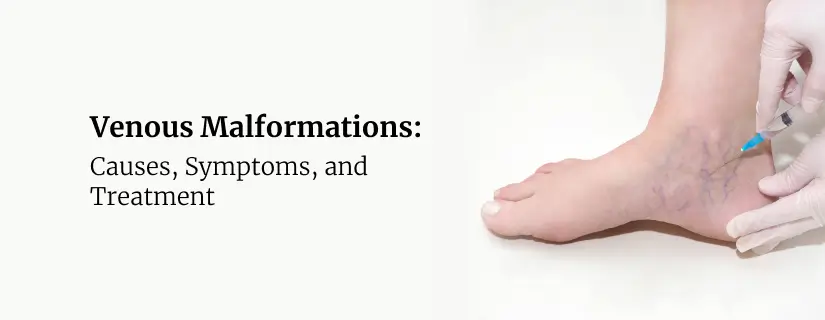
Venous malformations (VMs) are abnormally enlarged veins that do not function properly. VMs form before birth and consist of stretched-out veins lacking the smooth muscle cells present in normal veins. These malformations are present at birth but may become more noticeable over time. Let's explore more about venous malformations, their causes, and treatment options.
Signs & Symptoms of a Venous Malformation (VM)
The physical signs of venous malformations often appear as maroon, purple, or bluish spots on the skin. These marks commonly swell or become more prominent under specific conditions, particularly while exercising or when positioned below heart level that is dependent area which causes pooling of blood.
Pain manifests in various forms with venous malformations. Sudden, severe localised pain typically indicates thrombophlebitis within the malformation. Moreover, patients might experience dull, persistent aches and pressure sensations in the affected areas.
The most frequent symptoms include:
- Swelling that fluctuates in severity
- Bluish discolouration that shows through the skin
- Joint dysfunction near the affected areas
- Nerve-related discomfort in surrounding regions
- Recurrent blood clotting issues
What Causes Venous Malformations?
The formation of venous malformations occurs before birth, stemming from problems in vein development during pregnancy. Primarily, these malformations develop due to abnormal formation of blood vessels whilst the baby grows in the womb.
Several inherited conditions increase the risk of developing vascular malformations:
- Blue rubber bleb nevus syndrome - affects intestines and digestive system
- CLOVES syndrome - impacts spine development
- Klippel-Trenaunay syndrome - causes port-wine stains
- Hereditary hemorrhagic telangiectasia - creates abnormal capillary tangles
Generally, these malformations remain stable throughout childhood. However, certain factors can trigger changes or make them more noticeable. These triggers include hormonal changes during puberty, pregnancy, or physical injury to the affected area.
How Is a Venous Malformation Diagnosed?
- Physical Assessment: Accurate diagnosis of venous malformations begins with a thorough clinical examination. Doctors assess the appearance, texture, and response to compression of suspected areas. Physical examination alone can diagnose VMs in skin and superficial tissue.
- MRI: Magnetic Resonance Imaging (MRI) is the gold standard for VM diagnosis. MRI scans reveal these distinctive characteristics:
- Septated lobulated masses without mass effect
- Hypo-or isointense appearance on T1-weighted images
- High signal on T2-weighted images
- Slow, gradual peripheral enhancement
- No arterial or early venous enhancement
- Additional Tests: For complex cases, doctors might perform additional tests like magnetic resonance angiography (MRA) to map the venous system.
- Biopsy: In instances where malignancy concerns arise, doctors may think of a biopsy. However, biopsy in a vascular lesion is not advised routinely as it can lead to bleeding.
Accordingly, repeated imaging after 3-6 months helps monitor growth patterns since soft tissue tumours typically grow faster than VMs.
How Is a Venous Malformation Treated?
Small malformations without symptoms might not require treatment at all, fundamentally needing only observation and regular follow ups.
Basic Management begins with graded elastic compression stockings or sleeves for extremity malformations. These compression garments have shown significant results, with class II stockings reducing the size clinically visible.
The primary treatment methods include:
- Sclerotherapy: Performed under local or general anaesthesia, involving injection of sclerosing agents
- Endovenous laser therapy: Used for large venous channels that has straight segments
- Surgical excision: Particularly effective for facial malformations that are superficial and amenable to excision
- Compression therapy: Essential for extremity malformations
Possible Complications of Venous Malformations
Major complications include:
- Venous thrombosis
- Progressive painful tension requiring ongoing pain management
- Trophic skin changes with reduced infection resistance
- Muscle weakness affecting mobility
- Joint and bone problems with increased fracture risks
- Blood clotting disorders that can cause severe bleeding. Primarily, these include deep vein thrombosis, pulmonary embolism, and post-embolic pulmonary hypertension.
These complications are very rare and if occurred it can be easily treatable.
Conclusion
Medical advances offer several treatment paths for patients with VMs. Compression therapy serves as a basic starting point, while sclerotherapy and surgical options provide more long-term solutions. Treatment choice depends on the size, location, and severity of symptoms. However remember VMs can reoccur anytime anywhere.
Patients should watch for complications, especially blood clotting issues that occur in up to 40% of cases. Regular medical check-ups allow doctors to monitor changes and adjust treatment plans accordingly. Though VMs present lifelong challenges, proper management strategies help many patients maintain a good quality of life.
FAQs
1. What is the most common vascular malformation?
Venous malformations stand as the most prevalent type of vascular malformation, affecting one to two people in every 10,000. These blood vessel irregularities make up nearly two-thirds of all congenital vascular malformations.
2. Can venous malformations be cancerous?
Venous malformations are not cancerous. These are birth defects in blood vessel formation. Doctors classify them as benign vascular anomalies requiring monitoring and treatment based on symptoms.
3. Can a venous malformation go away?
Venous malformations do not disappear on their own. These malformations grow proportionally with the body and persist throughout life. Straightaway, it's worth noting that while complete resolution is rare, proper treatment can manage symptoms effectively.
4. Do venous malformations bleed?
Venous malformations can bleed, primarily when they affect internal organs or surface areas. The bleeding risk increases with trauma or injury to the affected area. The first thing to remember is that proper medical supervision helps manage bleeding risks effectively.
5. Is it normal to see veins on a baby's face?
Small visible veins on a baby's face often represent normal development. These typically fade over time. Parents should seek medical advice if the veins appear unusually prominent or show signs of swelling.
6. Is a venous malformation a tumour?
Venous malformations differ from tumours. These malformations represent developmental errors in blood vessel formation rather than growths. Unlike tumours, VMs show no active cell multiplication but instead consist of improperly formed blood vessels.
ENQUIRY FORM
SELECT CATEGORIES
-
Neurosciences (16)
-
Neurology (38)
-
Neurosurgery (14)
-
Orthopaedics (48)
-
Oncology (33)
-
Obstetrics and gynecology (52)
-
Pulmonology (23)
-
Urology (20)
-
Nephrology (13)
-
Psychiatry (7)
-
Dietetics and Nutrition (111)
-
General Medicine (63)
-
Cardiac Sciences (32)
-
Vascular & Endovascular Surgery and Interventional Radiology (15)
-
Gastroenterology (46)
-
Endocrinology (23)
-
Plastic Surgery (10)
-
Critical Care Medicine (5)
-
COVID-19 (16)
-
Dermatology (16)
-
Emergency Care (1)
-
Ophthalmology (4)
-
Pediatrics (14)
-
Laparoscopic and Bariatric Surgery (8)
-
ENT (15)
-
Kidney Transplant (1)
-
Liver Transplantation and Hepatobiliary Surgery (5)
-
General Surgery (3)
-
Internal Medicine (5)
-
Medicine Information
Varicose Vein Foam Sclerotherapy: Treatment, Benefits, and Procedure
YOU MAY ALSO LIKE
RECENT BLOGS
-
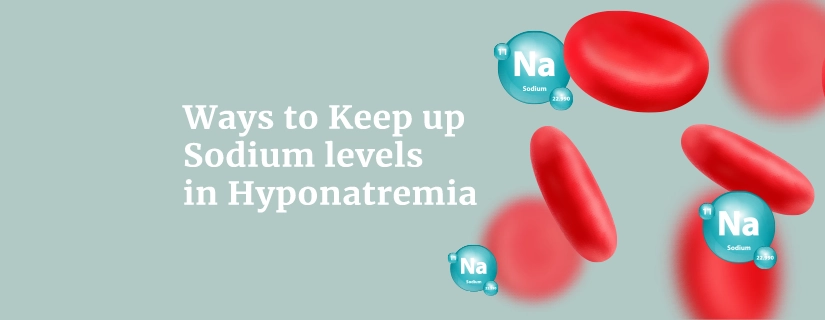
Ways to Keep up Sodium levels in Hyponatremia
11 December 2025
Read More
-

12 Health Benefits of Apple Cider Vinegar
1 December 2025
Read More
-
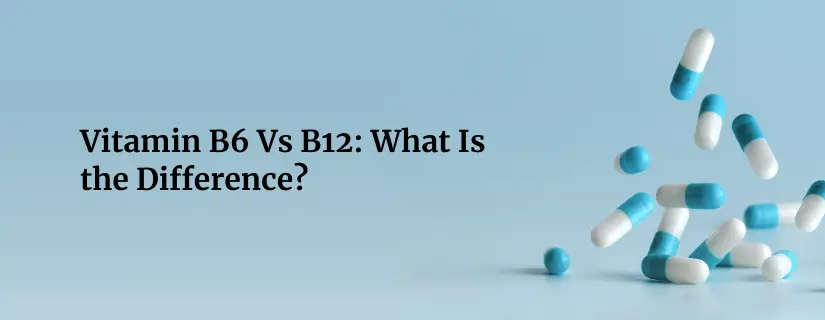
Vitamin B6 Vs B12: What Is the Difference?
1 December 2025
Read More
-
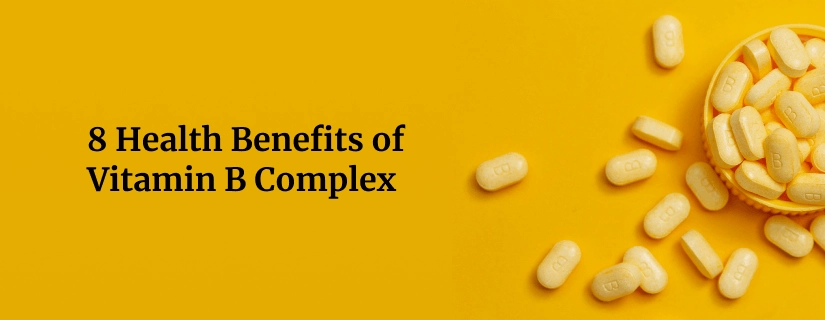
8 Health Benefits of Vitamin B Complex
1 December 2025
Read More
-
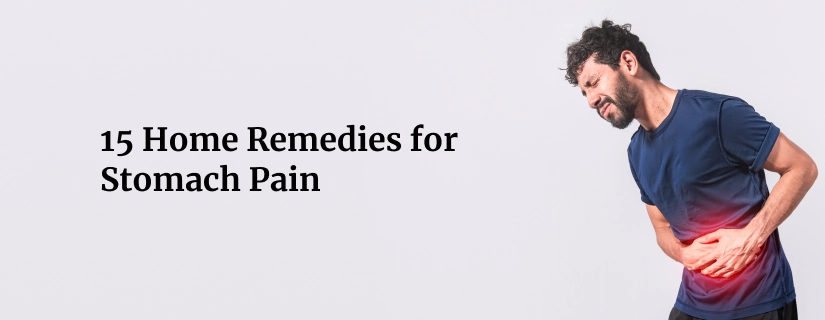
15 Home Remedies for Stomach Pain
1 December 2025
Read More
-
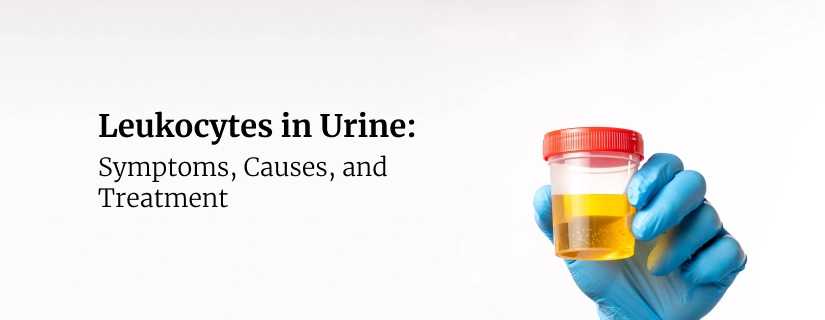
Leukocytes in Urine: Symptoms, Causes, and Treatment
1 December 2025
Read More
-
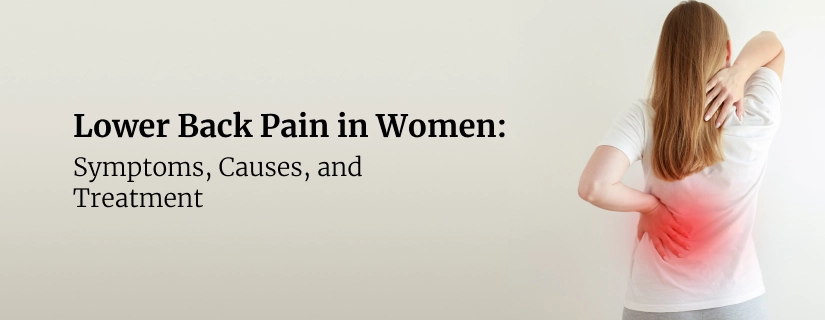
Lower Back Pain in Women: Causes, Symptoms, Treatment and More
1 December 2025
Read More
-
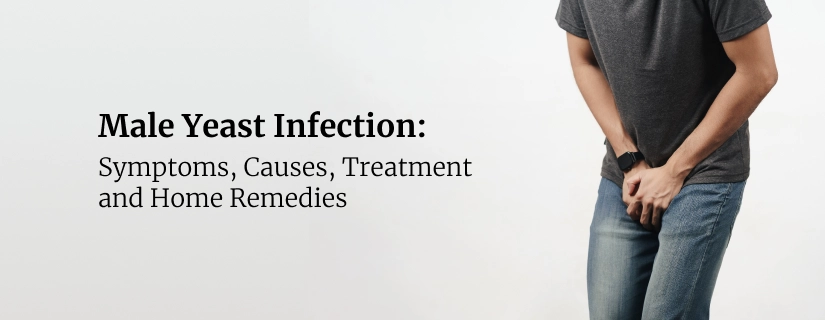
Male Yeast Infection: Symptoms, Causes, Treatment and Home Remedies
1 December 2025
Read More
Have a Question?
If you cannot find answers to your queries, please fill out the enquiry form or call the number below. We will contact you shortly.
